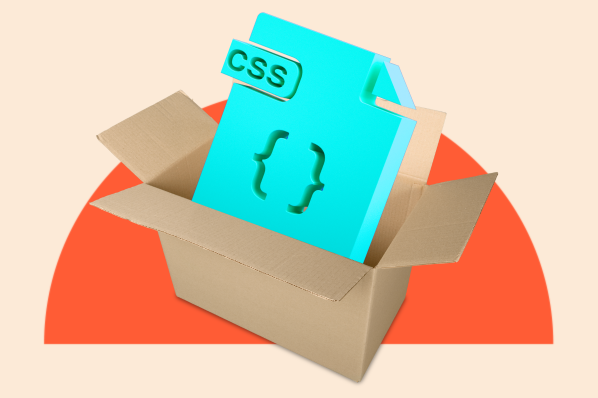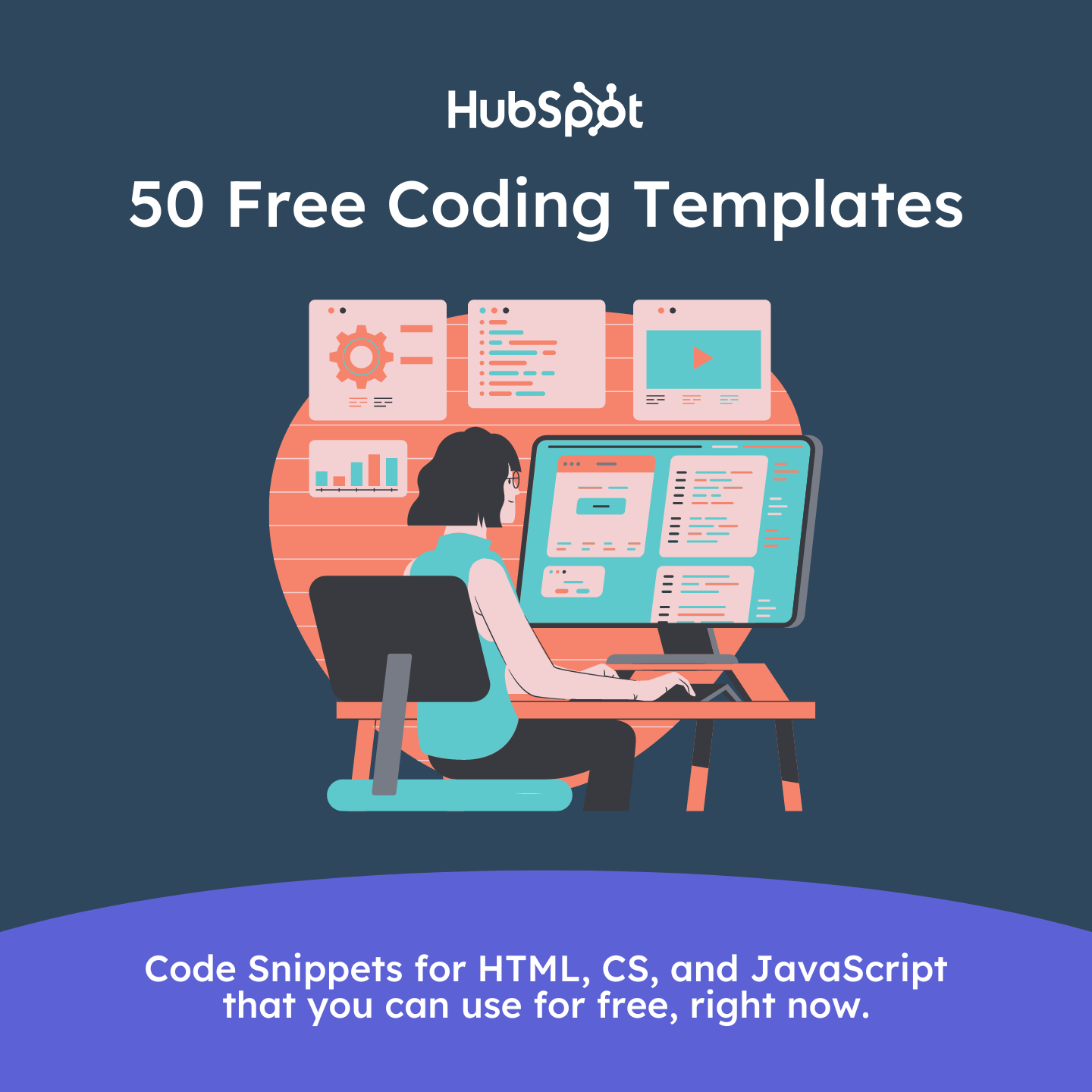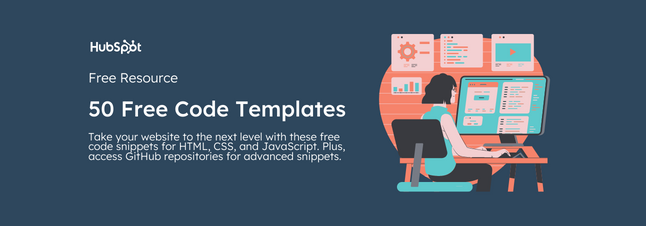Templates, frameworks, and blueprints for web design quickly became my best friend, allowing me to work quickly to a familiar rhythm and a little bit of customization along the way. CSS frameworks take lots of the work out of building beautiful UI and make it simple to pass things off to another designer or developer if I need to.
So, what are the different types of CSS frameworks? And which ones are the best? Let’s get started.
Table of Contents
What is a CSS framework?
A CSS framework is a prepared library that developers can use instead of writing CSS code from scratch. These frameworks provide a collection of CSS files with pre-written code for common web design elements like buttons, forms, navigation bars, and other interface components. By using a framework, developers can take a standardized approach to the structure and look of a website.
Aside from not having to write code from scratch, there are a few reasons to consider using a CSS framework. With the right CSS framework in your toolbelt, you can complete website projects much faster and without having to worry about responsive design. And if I need to work with developers and other consultants on a website, it keeps us all on the same page for a consistent design throughout.
Plus, I can typically use CSS frameworks to customize default styles very easily, depending on the project. And, if I get stuck, my favorite frameworks are those that have a large community built around them, with documentation and forums so I can lean on the expertise of more experienced front-end designers.
What are the different types of CSS frameworks?
Some CSS frameworks are just good all-around, while others focus more specifically on an aspect of UI design. Here are the general categories you’ll find:
Utility-First Frameworks
Some developers and designers may prefer lots of room for customization within a framework. If that’s the case, utility-first frameworks (like Tailwind) are the way to go. These frameworks use small, single-purpose classes (utility classes) with a specific style applied so you can build designs directly in your HTML markup. It makes it easy to prototype designs fast and customize sizing and layout within HTML without writing lots of custom CSS.
Responsive Frameworks
If it’s a priority for you that a website looks good on any device imaginable, look out for CSS frameworks that prioritize responsive design. Bootstrap is a great example and a framework I’ve used for exactly this reason. It saves complex configurations from web developers and questions from clients about why their website looks off-kilter on mobile.
Component Libraries
When speed is of the essence and you’re dealing with a lot of similar styling across multiple pages, component libraries are your best bet. Component frameworks like Materialize CSS and Semantic UI mean you can leverage a library of pre-designed components to quickly assemble pages.
Minimalist Frameworks
For smaller, simple websites, you don’t really need a lot of the features provided by most CSS frameworks. In those instances, a lightweight framework can provide all you need without bloated CSS files that might slow down the site. It’s one of the reasons that I keep the Skeleton framework handy, as I’m usually working on fairly simple websites for small businesses.
CSS-in-JS Frameworks
Sometimes, your JavaScript and CSS need to work closely together. CSS-in-JS frameworks enable both sets of code to work seamlessly together. With these frameworks, your JavaScript is blended with CSS for styling components, which is particularly useful for dynamic elements.
Grid Frameworks
If you’re working with a website that will be using lots of complex layouts, a grid framework helps you keep elements laid out in an orderly, responsive way on the page. It's like a virtual grid of rows and columns that you can place your content into, keeping it neat and organized.
1. Bootstrap

Developed by Twitter, Bootstrap is a super popular CSS framework for creating mobile-first websites. It doesn’t just provide CSS frameworks or fall into a single category (component library, grid framework, etc.) It’s one of the most robust frameworks because you can use it for pretty much all the scenarios I outlined above, including JavaScript and HTML components.
What we like: What makes Bootstrap a familiar favorite for me is its responsive design features. With Bootstrap, your site elements are automatically optimized for different screen sizes across desktop and mobile.
2. Tailwind CSS

Tailwind CSS is a utility-first framework. Instead of using pre-designed components, it gives you the tools to use utility classes to style your pages directly. This means less time guessing what class does what, and more time creating and building. You can learn more about the framework in HubSpot’s Tailwind CSS guide.
What we like: There are lots of reasons to like Tailwind, but one of the best parts is that it’s highly customizable and has everything you need, but still reduces bloat by only generating the styles you use.
3. Semantic UI

With Semantic UI, you get human-friendly language to style your web pages. With CSS styling in plain English, it’s a great option for beginner front-end developers. There are a ton of pre-designed components, and they’re all easy to integrate and customize in your designs.
What we like: For junior or beginner developers, Semantic UI makes CSS simple and straightforward, so you don’t have to spend time decoding what you’re actually applying to your site.
4. Bulma
.webp?width=650&height=302&name=bulma%20(1).webp)
Bulma uses the Flexbox layout, so it’s a good option if your focus is on highly responsive design. It’s also a minimalist framework, which makes it perfect for a sleek, modern website if that’s what you’re after.
To learn more, check out our in-depth article on the Bulma CSS framework.
What we like: Mobile-first design is top of mind for most front-end developers, and Bulma keeps that front and center. With its focus on simplicity, it’s also accessible for beginners to web design.
5. Materialize

Materialize CSS is known for providing a super clean and modern aesthetic to web designs. You can opt for a wide range of pre-designed components, but the framework also allows for plenty of customization. Responsive design is built in, and it’s straightforward and easy to learn.
Drawing inspiration from Google's Material Design, Materialize brings a sleek and cohesive aesthetic to web development. It provides a range of pre-designed components that adhere to Material Design principles, ensuring a consistent look across different platforms.
What we like: Materialize is based on Material Design, a design language by Google. This makes Materialize designs consistent and user-friendly across multiple platforms and devices.
6. Foundation

This CSS framework is crafted by ZURB with a focus on flexibility and customization. Using a mobile-first approach, Foundation ensures your site will look great on smartphones, tablets, and desktop. You can leverage modular components so you can pick and choose what you need. If you’ll be using a lot of animations in your web design, Foundation is a good pick.
What we like: Foundation is super flexible, so you can use it across a range of projects, from simple websites to more complex projects.
7. Pure CSS

Pure CSS was developed by Yahoo to provide a way for designers to create simple but effective UI. Using a modular framework, Pure takes a minimalist approach. So, this lightweight framework is great for performance.
What we like: If you’re trying to stay away from JavaScript or will be using it minimally on your site, Pure CSS has no JavaScript dependency.
8. UIkit

Ulkit is a lightweight, modular framework that packs a punch, so it’s a good choice if performance is a priority. The mobile-first design philosophy combined with a high level of customization options makes it very adaptable across different types of projects.
What we like: UIkit integrates really well with JavaScript frameworks, which is part of what makes it so adaptable.
9. Primer

If you’re familiar with GitHub and use it frequently, you’ll like Primer. This framework mirrors the interface of GitHub, so you’ll get up to speed quickly. It provides sleek designs through modular components, so you can mix and match easily.
What we like: Primer brings GitHub’s modern design to the broader web, so you can easily achieve a cohesive look and feel with relatively easy implementation.
10. Milligram

Milligram is best known for its minimalism. It’s a super lightweight framework with a tiny file size, so if page load times and site performance are top of mind, it’s a good choice. It might not have all you need for more complex projects, but it’s ideal for clean and simple design.
What we like: Milligram is perfect for projects where you want to start with the bare essentials and build up, ensuring fast, efficient, and visually clean results.
11. Fomantic UI

Fomantic UI combines Semantic UI with Semantic HTML to make web design more intuitive and user-friendly. Its high level of customization and focus on accessibility ensures your website will be easy to use for everyone.
What we like: Since Fomantic UI is community-driven, it’s constantly evolving and improving. Plus, if you’re new to the framework, you’ll be able to leverage the community and tons of guidance and documentation to help you out.
12. Blaze UI

This open-source toolkit is designed for front-end development that’s easy to scale and maintain. Blaze UI is lightweight to promote fast load times and emphasizes accessibility to make your websites user-friendly for all audiences.
What we like: Its emphasis on scalability makes it perfect for growing projects, and its lightweight nature ensures performance isn’t compromised as your site grows.
13. Vanilla Framework

An open-source, lightweight framework, Vanilla offers flexibility and a comprehensive range of HTML elements. Vanilla uses a responsive grid framework, so it’s quick to build highly responsive, well-laid-out web pages.
What we like: It’s very straightforward and easy to use, making it good for beginners and efficient for experienced developers.
14. Open Props

If you’ve got a project you’re already working on and you’ve realized that a CSS framework would be helpful, Open Props is a good choice. Its incremental adaptability means you can integrate it into existing projects as needed. This is mostly borne from its high degree of flexibility and customization when it comes to design.
What we like: This CSS library provides a level of customization that makes it ideal for unique or complex web designs. It’s also available for JavaScrip applications, too.
15. Tachyons

Tachyons is a utility-first CSS framework with a functional approach using a modular framework. It uses readable syntax to make it efficient and easy to use.
What we like: Tachyons enables developers to build clean code that’s easy to maintain and improves long-term site health.
16. Chota
%20(1).webp?width=650&height=379&name=Chota%20(1)%20(1).webp)
There’s lightweight, and then there’s Chota. This minimalist CSS framework is extremely small and makes it easy to use CSS variables to quickly change colors, fonts, and other design elements easily.
What we like: Chota's simplicity makes it perfect for small projects or when you need something up and running quickly.
17. Spectre
.webp?width=650&height=260&name=Spectre%20(1).webp)
Spectre is at the cutting edge of CSS technologies, enabling designers to build highly responsive, modern websites. While it focuses forward in terms of modern design, Spectre is compatible with older browsers, so your website will always look good.
What we like: While it doesn’t have as large a community as more popular frameworks, the Spectre documentation is extensive to get you started quickly.
18. Skeleton
Skeleton is a CSS framework that shines with its minimalism, so developers can craft custom, responsive designs without the bloat of larger frameworks. It's incredibly lightweight and known for its sleek, elegant design.
What we like: Skeleton is perfect for projects where you need a fast, clean starting point without overwhelming features. Its simplicity is a big plus for smaller projects or when a fast, minimal approach is essential.
19. Water CSS

Water CSS is all about providing the essentials in a minimalistic package. It's super easy to use and quick to load, making it a great choice for simpler projects or when speed is a priority.
What we like: Water CSS takes a no-fuss approach, so it’s ideal for small projects or sprucing up a page without getting into complex styling.
20. MVP CSS

As its name suggests, MVP CSS is tailor-made for quickly styling minimal viable products. It's straightforward, with no need to memorize class names, and the use of CSS variables allows for easy customization.
What we like: MVP CSS is great for product designers and developers who need rapid prototyping, so they can focus on functionality without getting bogged down in styling details.
21. Ant Design

Ant Design offers a comprehensive suite of UI components. It stands out for its internationalization support, making it suitable for global audiences. The framework is versatile, customizable, and ensures your designs look great on any device.
What we like: Ant Design provides an extensive component library that saves time and effort, and its focus on responsive, international-friendly design makes it a strong choice for diverse web projects.
22. W3.CSS

W3.CSS is a sleek, easy-to-use framework that prioritizes simplicity and speed. It's designed to ensure consistency across different browsers with minimal coding.
What we like: W3.CSS’s lightweight nature makes it a perfect choice for quick projects or for beginners who are stepping into the world of web development.
23. Kube
Kube is a sophisticated framework aimed at professional developers and designers. It stands out with its clean, structured code base and emphasis on efficiency. If you’re new to CSS and web development, this one might be a little out of reach.
What we like: The framework's focus on professional-grade development without unnecessary bloat makes it ideal for more complex projects.
24. Gumby

Gumby is a responsive and flexible CSS framework powered by Sass. It includes various UI components and a versatile grid system.
What we like: Gumby's Sass-powered customization gives a high degree of flexibility, perfect for creating responsive designs with a personal touch.
25. Picnic CSS

Picnic CSS is a lightweight, yet powerful, CSS library. It offers essential UI components with an easy-to-use grid. It’s all wrapped in a visually appealing package to make it easy to use and perfect for creating beautiful websites.
What we like: The simplicity and aesthetic appeal of Picnic CSS make it a great choice for projects where design and ease of use are top priorities.
26. Siimple

Siimple provides a minimal foundation for clean and flat designs. Its focus is on simplicity and basic styling, so you get a neat and uncluttered starting point for web projects.
What we like: Siimple is ideal for projects where a minimalist approach is needed, helping to create clean and elegant web pages without any fuss.
27. Neumorphism.io

I haven’t used Neumorphism directly, but it’s an interesting option that’s based on the neumorphic design trend — which blends background colors, shapes, gradients, and shadows to create a soft, 3D design look.
What we like: If you want a CSS framework that puts your design right at the forefront of modern trends, Neumorphism is worth a look.
Choose the CSS Framework You Need
The choices are vast when it comes to picking a CSS framework. Since they’re mostly free to use, you can spend the time checking some out directly. But with so many to select from, it’s a good idea to narrow down your requirements first.
When you know what you’re primarily trying to achieve with a CSS framework, you’ll be able to hone in on the type you need before checking out a few from the list to see what works best.






![How to Create Scrolling Text With CSS [+ Code Examples]](https://53.fs1.hubspotusercontent-na1.net/hubfs/53/Google%20Drive%20Integration/scrolling%20text%20css.jpeg)





